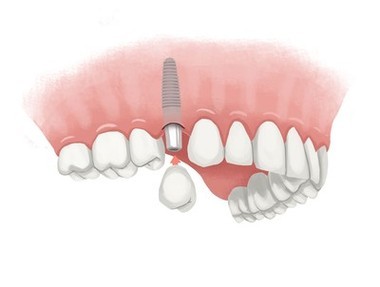But understand that short-term health insurance may have limitations that routine health insurance coverage does not have, such as caps on annual advantages paid. Medicare is a federal medical insurance program for Americans above the age of 65. It supplies free or heavily cost-reduced health care to qualified enrollees. There are 4 parts to Medicare that cover various healthcare services:Part A for inpatient (hospital) care, for which many people pay no premiums Part B, for outpatient care, like doctor's office visits. In 2021, Part B has a monthly premium of $148. 50.Part C, which is also called Medicare Advantage, and allows you to purchase into personal health insurance.Part D, for prescription drug protection. gov or your state exchange.

Medicaid is a federal and state health insurance program for low-income households and individuals. Medicaid has eligibility requirements that are set on a state-by-state basis, but it is mostly developed for those with low earnings and low liquid assets. It is likewise developed to help households and caretakers of little kids in requirement. You can normally inspect if you qualify for Medicaid through health care. gov or your state exchange. The Kid's Medical insurance Program( CHIP) is a federal and state program that resembles Medicaid, however specifically designed to https://www.taringa.net/kevotadlzb/see-this-report-on-how-to-sell-insurance_50il8s cover kids below the age of 18. Like Medicaid, you can normally see if you certify and use on Health care.
gov or your state's exchange. All private medical insurance strategies, whether they're on-exchange or off-exchange, work by partnering with networks of health care providers. However the manner in which these strategies work with the networks can vary significantly, and you want to make sure you understand the distinctions in between these plans.HMO plans are the most limiting type of plan when it pertains to accessing your network of providers.If you have an HMO strategy, you'll be asked to pick a main care physician( PCP) that is in-network. All of your care will be coordinated by your PCP, and you'll require a referral from your PCP to see a professional. HMO strategies typically have less expensive premiums than other kinds of personal health insurance coverage plans.PPO prepares are the least limiting kind ofplan when it pertains to accessing your network of service providers and getting care from outside the strategy'snetwork. Usually, you have the choice between choosing between an in-network medical professional, who can you see at a lower cost, or an out-of-network doctor at a higher expense. You do not require a referral to see a specialist, though you might still select a medical care doctor( some states, like California, may require that you have a primary care doctor). PPO plans normally have more pricey premiums than other types of personal health insurance coverage plans.EPO prepares are a mix between HMO strategies and PPO plans. However, EPO strategies do not cover out-of-network physicians. EPO plans usually have more expensive premiums than HMOs, however more economical premiums than PPOs.POS strategies are another hybrid of HMO and PPO plans.
You'll have a medical care service provider on an HMO-style network that can coordinate your care. You'll also have access to a PPO-style network with out-of-network choices( albeit at a higher expense). The HMO network will be more inexpensive, and you will need to get a referral to see HMO experts. POS strategies usually have more costly premiums than pure HMOs, however more economical premiums than PPOs. Find out more about the distinctions in between HMOs, PPOs, EPOs, and POS strategies. Some people get puzzled since they think metal tiers describe the quality of the strategy or the quality of the service they'll get, which isn't real. Here's how health insurance coverage plans roughly divided the costs, organized by metal tier: Bronze 40% consumer/ 60%.
insurer, Silver 30 %consumer/ 70% insurance provider, Gold 20 %customer/ 80 %insurer, Platinum 10 %consumer/ 90 %insurance provider, These are top-level numbers across the totality of the strategy, taking into account the deductible, coinsurance, and copayments, as determined by the specific structure of the plan, based upon the anticipated typical usage of the strategy. These portions do not take premiums into account - What is term life insurance. In general, Bronze strategies have the most affordable regular monthly premiums and Platinum have the highest, with Silver and Gold occupying the cost points in between. As you can see from the cost-sharing split above, Bronze strategy premiums are less expensive because the customer pays more expense for health care services.

If you often utilize health care services, you'll most likely wind up paying more out-of-pocket if you pick a Bronze plan, despite the fact that it has a lower premium. If you certify, you can utilize a medical insurance premium aid to help you afford a strategy in a greater tier, eventually saving you money. westlake financial español número Catastrophic plans have really high deductibles frequently, the deductible is the very same as the out-of-pocket max which indicates they're really only beneficial for avoiding a mishap or severe health problem from causing you to go into serious financial obligation. Catastrophic strategies are just readily available for people under 30 or people with a hardship exemption. You can not utilize an aid on catastrophic strategy premiums, but, for years during which timeshare advocacy the medical insurance mandate was active, disastrous strategies did count as certifying healthcare. When you purchase a medical insurance strategy, it's important to know what the crucial features are that choose just how much you're in fact going to pay for health care. Each month, you pay a premium to a health insurance company in order to access a medical insurance strategy. As we'll enter into in a second, while your month-to-month premium may be how much you spend for medical insurance, it's not equivalent to just how much you pay on health care services. In reality, picking a strategy with lower premiums will likely mean that you'll pay more out-of-pocket if you need to see a physician. A deductible is just how much you need to spend for healthcare services out-of-pocket prior to your medical insurance kicks in. In the majority of strategies, once you pay your deductible, you'll still need to pay copays and coinsurance up until you struck the out-of-pocket max, after which the strategy spends for 100 %of services. Keep in mind that the deductible and out-of-pocket maximum explain 2 different principles: the deductible is how much you'll pay for a covered procedure before your insurance coverage starts to pay, and the out-of-pocket maximum is the total amount you'll spend for care including the deductible. A copayment, frequently shortened to simply" copay," is a fixed amount that you spend for a specific service or prescription medication. Copayments are one of the manner ins which health insurance companies will divide costs with you after you hit your deductible. In addition to that, you may have copayments on specific services prior to you hit your deductible. For instance, numerous health insurance strategies will have copayments for doctor's gos to and prescription drugs before you hit your deductible.